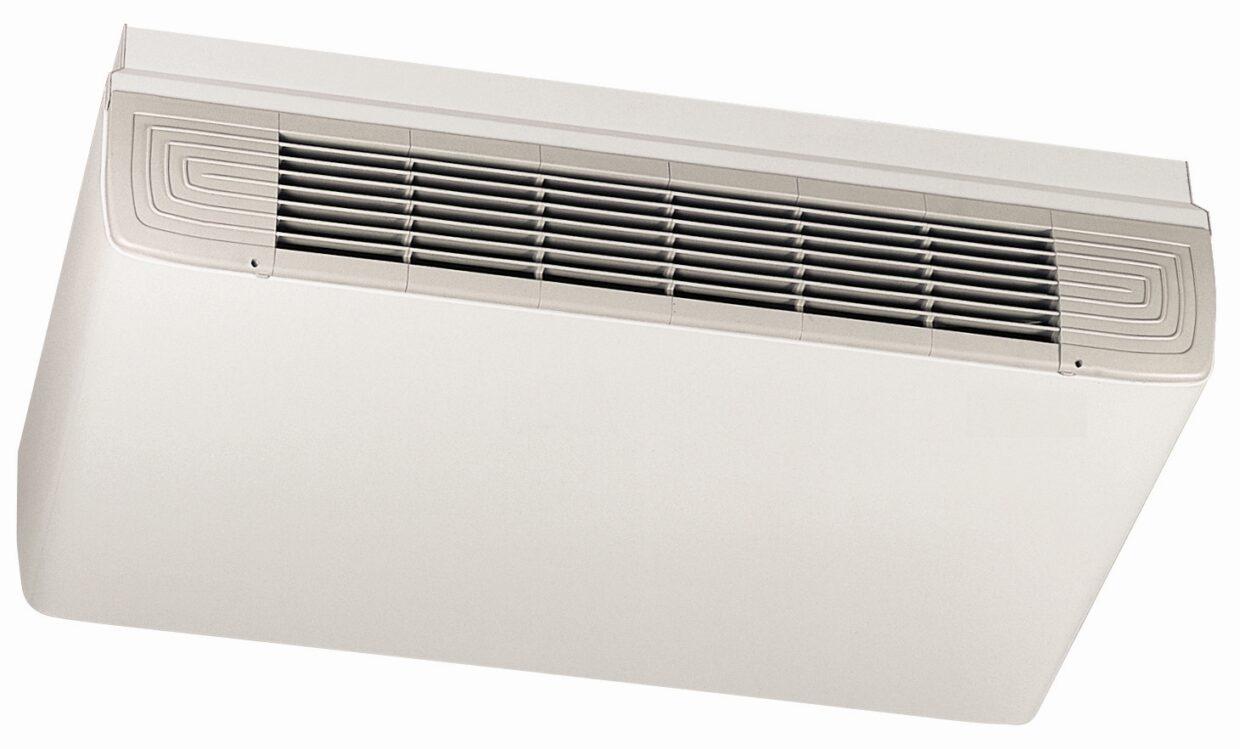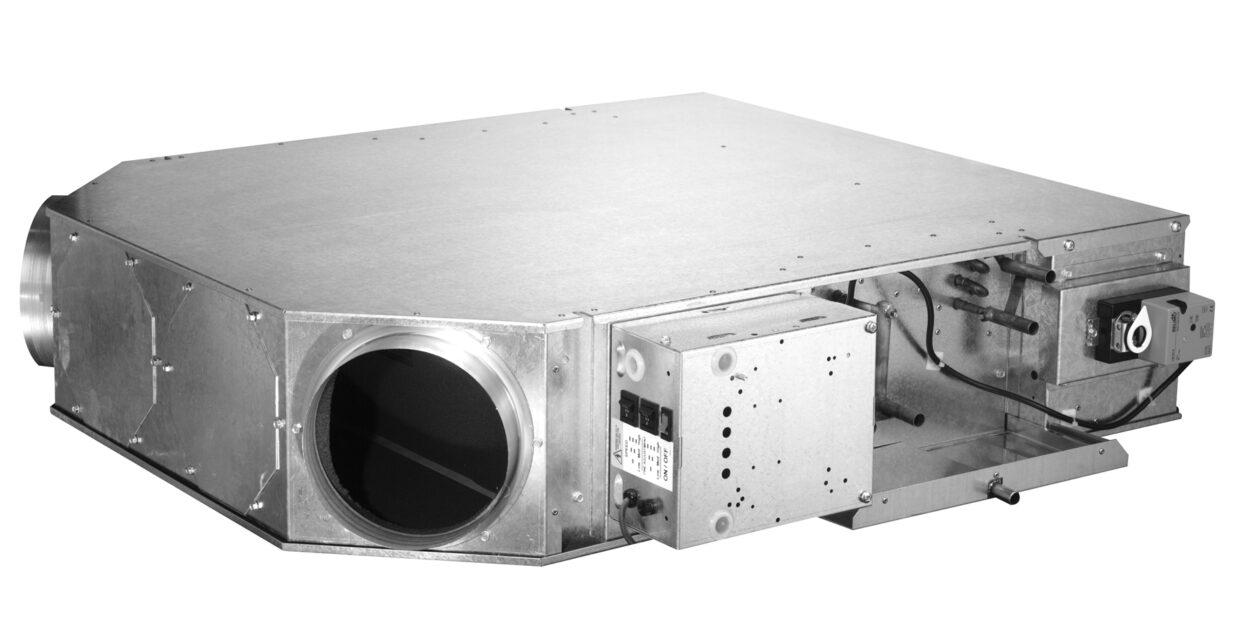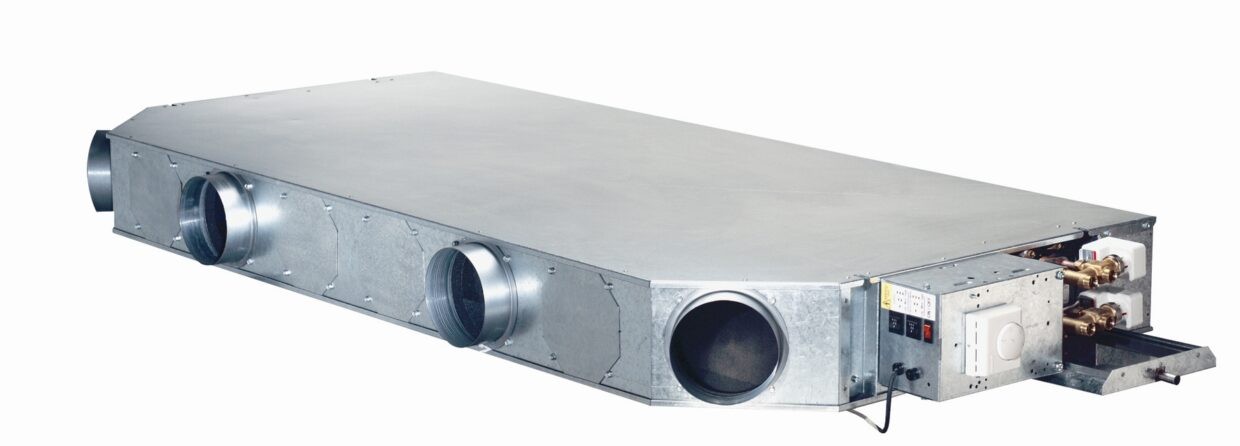No products in the cart.

MASTERCLASS – AIR CONDITIONING TECHNOLOGY
Volume 47 – Chilled Water Fan Coil Units
In last month’s article (Vol 46) we concluded our 4-Part Study of Textile Based Distribution Systems. We now continue with Part 47 in this module dedicated to Chilled Water Fan Coil Units.
FAN COIL TERMINAL UNITS
With ever-advancing material and control technology, there is a widening range of options for meeting the air conditioning requirements of any industrial or commercial location.
Fan coils represent something of a paradox in the HVAC equipment market. Compared with some other types of equipment, fan coils are in mechanical terms relatively unsophisticated. Yet they can offer an incredibly versatile range of performance and siting options which may be tailored to suit innumerable applications. This is extremely useful in a market that makes increasingly rigorous demands on all aspects of performance, and is acutely price-competitive.
Fan coil units are available in two main categories depending on control methodology. Each has its place in providing a solution for the space to be conditioned.
The more traditional type of fan coil control is via waterside control valves that regulate the heating and cooling output by varying the low pressure hot water/chilled water flow rate through the appropriate coil. This is the four-pipe configuration, generally considered to be the best available control with the simplest form of operation. Options involving two-pipe cooling only, in certain instances, coupled with some form of auxiliary heater such as electric resistance, have their place when necessary.
Airside control units, regulate of the units’ output by adjusting the amount of air passing over the cooling or heating coil, or by-passing both coils if no treatment is required.
Low Pressure Hot Water (LPHW)/chilled water will pass through the heat exchanger coil unchanged when airflow over the coil ceases. There is therefore no need to either modulate or shut off water flow on airside controlled fan coil units.
In this first article we seek to ‘lift the lid’ on the humble waterside fan coil unit and illustrate the uses, flexibility and versatility of this type of terminal equipment.
As with all types of such equipment, the constraints arise from a typical mix of physical size, capacity required, acoustic criteria and, of course, cost. Selection of units is generally made on the nominal cooling capacity at a medium fan speed setting. This should ensure that the unit is capable of meeting the conditioned space requirements for load/temperature control quietly, while offering a measure of capacity control flexibility should this prove to be necessary.
Waterside control fan coil units consist of the following key components: chassis, insulation, fan(s), coil(s), controls, air filter(s) and air distribution facilities.
Chassis construction depends on the size and configuration of the key components, but units can be as slim as 120mm and thereafter in all manner of shapes and sizes to suit location. For example, they may be sited within a ceiling void, under a windowsill, within a wall space or behind a custom architectural enclosure.
Insulation material plays a key role in two principal areas of fan coil operation. First, it obviously provides a measure of thermal insulation to help maximise the effect of the cooling and heating air used to treat the space. However, of equal, if not greater significance nowadays, is the secondary aspect of its acoustic attenuation properties.
Visually, the cooling/heating coils employed in fan coil units are typically standard air-to-water heat exchangers employing copper tube and aluminium finning material. However, variations in output performance are made through the ability to select coils based on length, number of rows and tubes, circuitry and routing, fins per inch and even fin style. Further variations can be achieved via changes in the supply of either air and/or water services through temperature or flow rate adjustments.
Control of fan coil units can be virtually as simple or as complicated as demands dictate. Remember that the capacity of the fan coil unit can be controlled by: varying the water flow rate through the respective heat exchanger or changing the air flow rate through the respective heat exchanger (or a mixture of both).
Thus the controls could take the form of three-speed and off fan control switch coupled with a basic on/off thermostat arrangement in the space being controlled. Alternatively, the latest in programmable electronic controllers could be employed, capable of integration into a BMS system and operating with occupancy sensory inputs from doors and windows.
Air filtration is a key aspect of all fan coil equipment. It should reduce the airborne contaminants in the space being treated while protecting the fan, motor and coil assembly from clogging with particles entrained in the air.
Depending on the particular application, a washable or disposable filter located upstream of the fan should prevent clogging of internal components.
Applications involving domestic dwellings, hotels and hospitals will require more frequent attention owing to the amount of lint present. This becomes a key aspect of the maintenance of the fan coil unit, since to ignore lint would be to the detriment of short-term operating performance and long-term functionality.
Air distribution options and indeed unit configuration, allow fan coils to be utilised throughout an installation, regardless of the variations in internal space requirements. The units can be vertical or horizontal, could be in the space mounted with a casing or enclosure, or remotely located with ductwork to/from the space being treated. The number of the ductwork connections can be varied as necessary.
Other aspects to be considered include provision of fresh air services to terminal units and condensate removal during the units’ cooling operation.
Typical fan coil cooling and/or heating systems require an appropriate chiller, (or multiple chillers), boiler and circulating equipment, though advances in heat pump technology enable single-pack machinery to provide heating and cooling services.
The key to system design is taking all possible steps to ensure that the operating specification is met in its entirety, with no adverse ‘noises’ noted when the units are running.
Also important are proper installation and commissioning coupled with good ongoing regular service and maintenance that should ideally be tailored to the application and site location.
Access for maintenance should be at the forefront of both the unit and site design process to ensure that the installation can be cared for properly and any problems identified speedily.
End user application for fan coils include government buildings, retail outlets, commercial office blocks, hospitals, hotels and financial dealing rooms and trading outlets.
A chilled water/LPHW fan coil system requires less building space than that of a fully ducted installation (pipework versus ductwork). It also benefits from the advantages of a centralised chiller and boiler plant while retaining the flexibility of local units being shut down in unused areas.
Units can be specific to areas or zones and so deal more accurately with their needs. Fan coils are also particularly suited to refurbishment and installation in existing buildings where the fitting of an air/ductwork system would prove extremely difficult, if not impossible.
The disadvantages of the fan coil relates mainly to maintenance, most of which has to be carried out in occupied areas. In particular, the cleanliness of drain trays air filters has to be closely controlled.
Examples of Chilled Water Fan Coils:

Cased Chilled Water Fancoil

Chilled Water Fan Coil

Slimline Ducted Fan Coil
Following this introduction to fan coils, the subsequent months’ articles will now continue with the greater intricacies of fan coil selection installation, service and maintenance.
_________________________________________________________________________________________________
NEXT MONTH: VOL 48 – Chilled Water Fan Coil Units – Continued
DISCLAIMER:
Whilst every effort is made to ensure absolute accuracy, Business Edge Ltd. will not accept any responsibility or liability for direct or indirect losses arising from the use of the data contained in this series of articles.
____________________________________________________________________________
